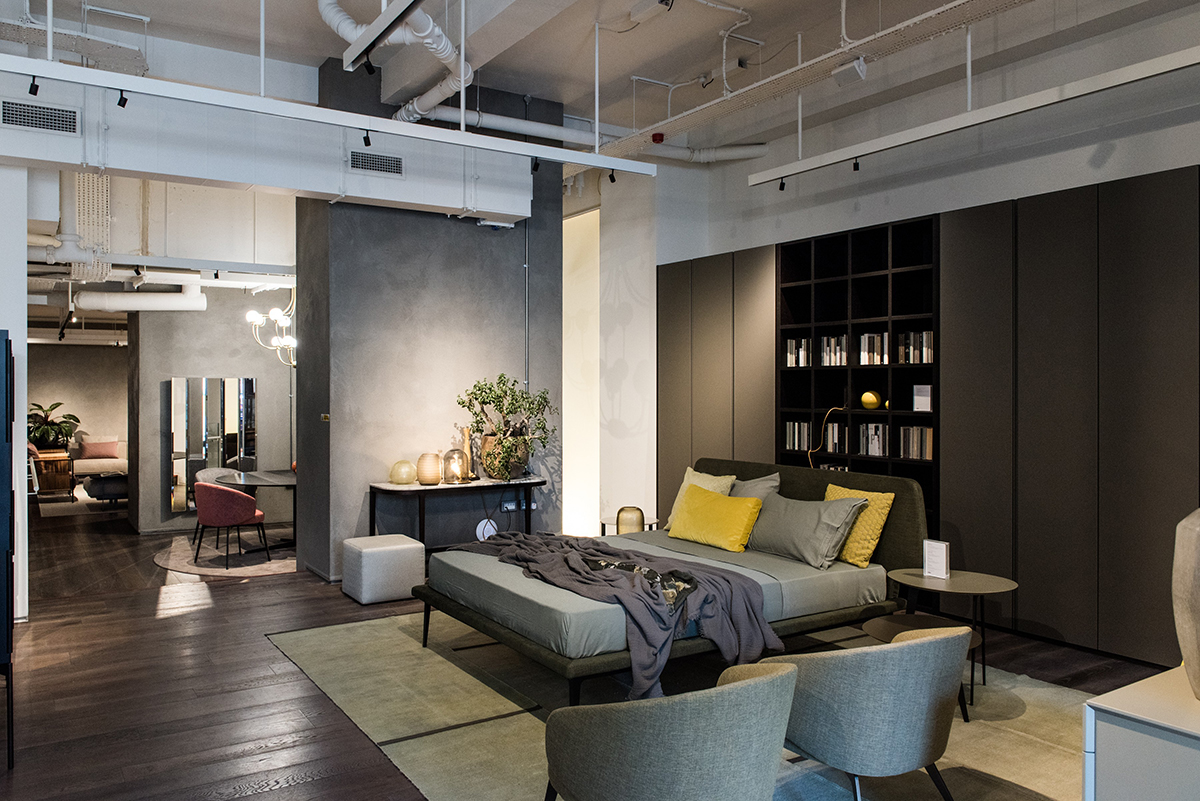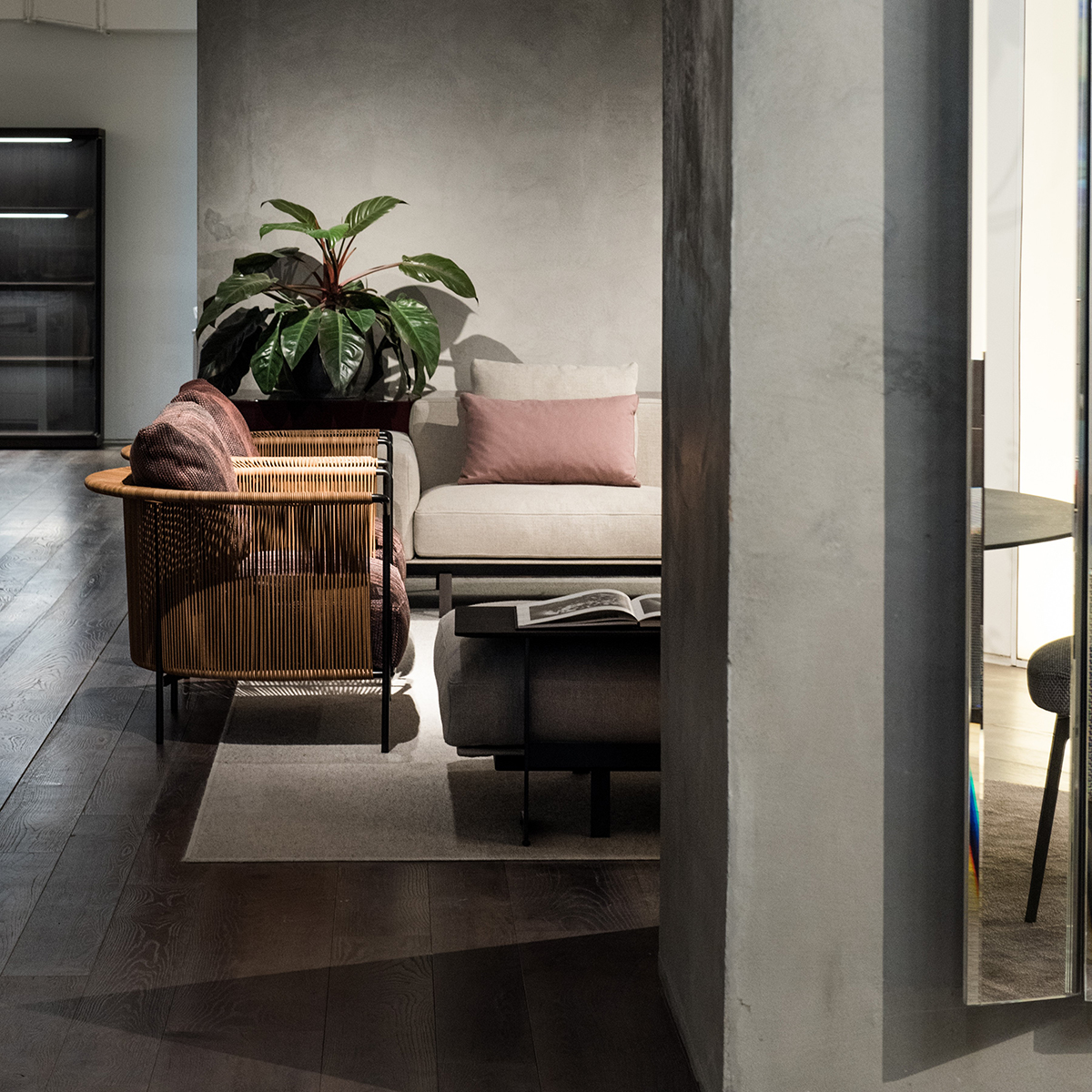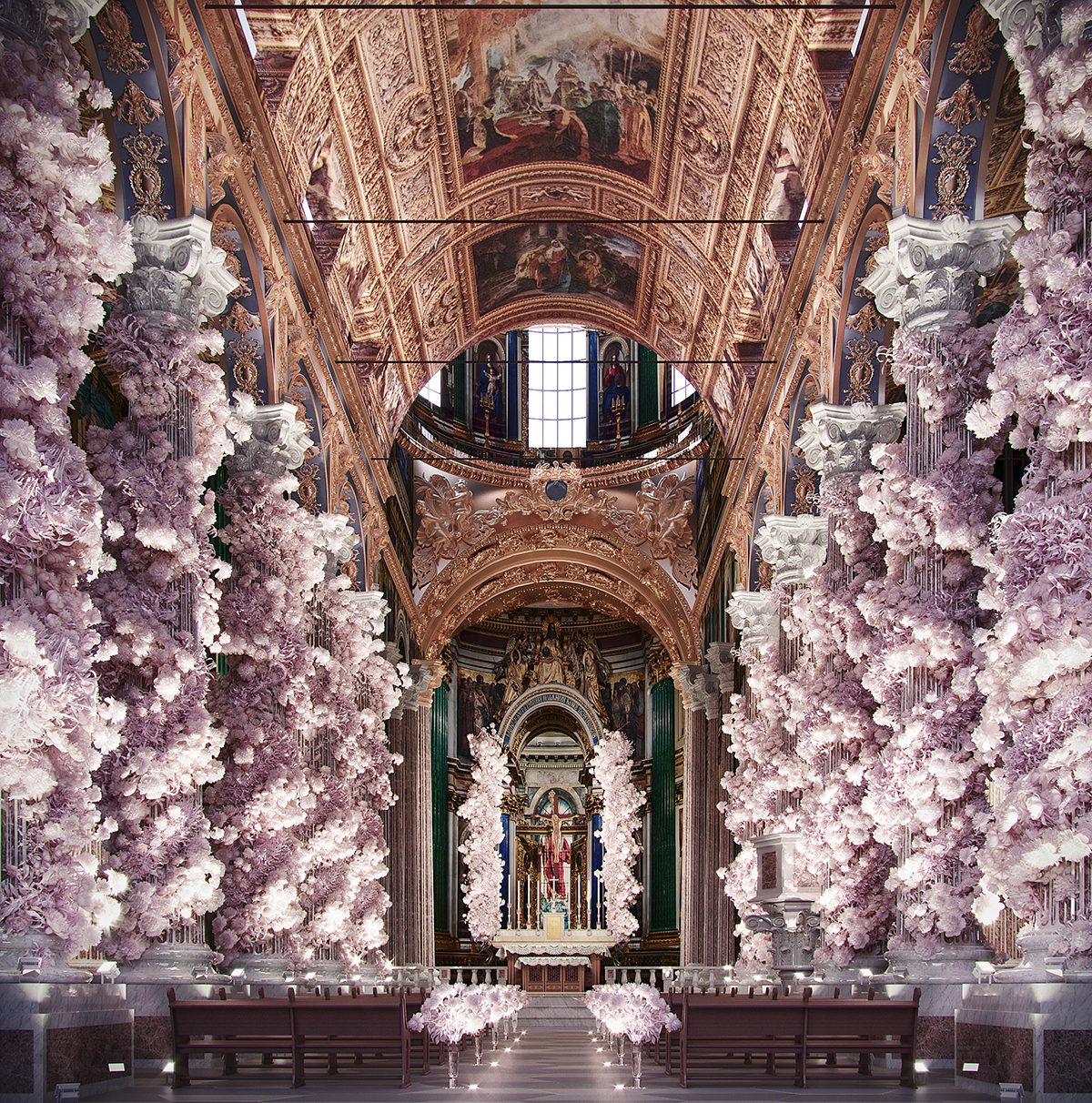
A display in LEMA’s London showroom. Photography by Emma Lambe
Founded in 1970, LEMA still remains family-owned and true to its ‘Made in Italy’ philosophy. The group collaborates with famed architects and designers to produce elegant, modern furniture and made-to-measure interior fittings for residential and commercial properties across the globe. Ahead of this year’s Salone del Mobile in April, we speak to the company’s president Angelo Meroni about working with family, discovering new talent and moving into the Asian market.

Angelo Meroni, President of LEMA
LUX: Tell us about your history and how the brand started?
Angelo Meroni: Our family tradition in the furniture market began in the 1930s with my grandfather. In the 30s following the Brianza manufacturing tradition, he opened a small shop in the town centre. At the time, it was purely craftsman work, completely handmade, in fact, the production times would be unthinkable nowadays. Later, the 1940s saw the opening of the first store in Milan city centre. Here, during the years of the economic boom, LEMA was able to collaborate with the first nationally recognised architects and designers to embrace a production characterised by a more modern aesthetic. Then in 1970, my father founded the brand LEMA and the all-important organised industrial production started, with an innovative factory in Alzate-Brianza designed by Angelo Mangiarotti, a cutting-edge plant for a production with a new philosophy. Indeed, LEMA was the first Italian brand to design and produce integrated furnishing systems, organising the entire production cycle from receiving the raw materials to the packaging. The breakthrough came in 1981 when the “Made-to-Measure Wardrobe” was conceived, a modular custom-made closet solution, a key step in establishing LEMA in the market. The system still exists to this day, and is under constant evolution, fulfilling and anticipating the needs of private and contract customers.
Follow LUX on Instagram: the.official.lux.magazine
LUX: You work alongside your two sisters – what are the challenges and benefits of working with family?
Angelo Meroni: The family factor within LEMA is the ‘soul factor’, which gives our designers the possibility to communicate directly with this ‘soul’. As a family, we are directly involved in all areas of the design and selection processes where we decide what furnishings will be produced for the following year. However, LEMA is also a corporate reality, we have more than 250 employees, more than 985 worldwide dealers in over 65 countries. This way we are able to maintain the balance between a strictly family business and an international reality. My sisters and I also look after different sectors of the business, therefore we are able to capitalise on the benefits rather than the challenges.

LEMA works with leading designers to ensure the highest level of craftsmanship
LUX: Why is it so important that the brand maintains a ‘Made in Italy’ ethos?
Angelo Meroni: Since the brand was founded, LEMA has championed the ‘Made in Italy’ ethos by expertly mixing innovation and tradition, turning quality and personalisation into our unique selling point. I would say that this is one of our key strengths, where our extraordinary manufacturing ability meets the typically Italian excellence, allowing LEMA to combine the values and technological efficiencies of a large enterprise with fine and unrivalled craftsmanship, which is unique to Italy.
LUX: You created the first air-cleaning wardrobe system – how did that idea come about?
Angelo Meroni: The LEMA Air Cleaning System is the result of more than twelve months of research, which was created from an idea I had that the wardrobe should play an active role in our well being. Using patented Photocatalytic Oxidation technology, which is mainly used to purify aerospace environments where one of the main issues is to maintain the quality and cleanliness of the air. Indeed, we spend a great deal of our busy daily lives in environments outside our homes: in places such as offices, public transport, shopping centres, restaurants, hotels and gyms, where the quality of air is poor due to inadequate air-recycling: bacteria, allergens, carbon monoxide, particulate matter which permeates our clothing generating bad odours. Interestingly, the Air Cleaning System can be positioned discreetly at the top of any wardrobe, and it uses nanotechnology and a special UV lamp to generate a photochemical reaction that naturally destroys pollutants, bacteria and moulds, purifying the inside of the wardrobe and eliminating up to 90% of these.

Photography by Emma Lambe
LUX: How does your design approach differ for bigger contractual work as seen in LEMA Contract fitting out of the Bulgari London Hotel?
Angelo Meroni: Our Casa and Contract divisions are tightly connected, as for both we use our “made-to-measure” and bespoke philosophy. However, through our Contract Division LEMA’s indissoluble connection with the design world finds its utmost expression. We have a cutting-edge industrial department dedicated solely to the residential, hospitality and office sectors, which has a strong and consistent growth. Our mission statement: “You Think We Make”, defines our mission; our Contract clients can find in LEMA a knowledgeable partner in the development of every project where we interpret and translate all aesthetic and functional needs. In London alone we have collaborated with some of the best-known interior designers, architect firms and developers, collaborating on projects such as The Chilterns apartments, Holland Park Villas, 190 The Strand and Bulgari Hotel, which you mentioned and we are currently delivering Lincoln Square, to name but a few.
LUX: You’ve recently moved into the Asian market, how does an Italian brand appeal to Asian consumers?
Angelo Meroni: Yes indeed, in 2017 we opened a flagship store in Shanghai, which confirms LEMA’s interest in the Asian market and China in particular. The previous year we had inaugurated more than 1000 square meters of showroom space in Shenzhen, an increasingly cosmopolitan hub, where we expressed our Italian excellence. Our Contract sector has also been increasingly busy with the Chinese market, last year we supplied more than 1,000 customised wardrobes for the prestigious One Park apartments in Shanghai.
Regarding our Casa Division, we have also produced some products with the Far East market particularly in mind. For example, at the Milan Salone del Mobile last year we presented the Bulè table that comes with a rotating ‘lazy Susan’, which is perfect for the Asian market, of course, you can also sell it without the rotating centre and then it becomes a normal table. The Asian market is extremely attracted to all that Italy has to offer, and being a strictly “Made in Italy” brand we have been able to draw on this as a unique selling point in this vast and competitive market.
Read more: Balmain’s Olivier Rousteing on redefining Parisian glamour
LUX: How do you issue a design brief for LEMA Casa and to what extent are you involved in the creative process?
Angelo Meroni: Each year, we start the creative process for the new pieces that are first unveiled at the Salone del Mobile in Milan, the most important date in the design calendar. As far as designers go, we are open to anybody. Our Art Director Piero Lissoni looks after a preferred team of designers that we have been working with for years and whom we know very well. Yet, we are especially open to young designers. This is one of the big values of LEMA, we like to discover new talents. While some of our designers such as Francesco Rota and Gordon Guillaumier have been part of our team for years, they were fairly young when they started working with us. It’s an evolving process and it carries on with no ending, a process in which I like to be personally involved across all the phases.
LUX: You fitted out all of the Vodafone shops in Italy in 3 days twice – how did you manage it?
Angelo Meroni: We started with the Italian Vodafone flagship store, in the famous Piazza San Babila in Milan, which welcomes thousands of customers in a super-technological atmosphere. We were asked to realise the whole furniture set of this selling point: demonstrating our ability to build environments according to the customer’s specific needs. It was a record – the whole furniture was engineered in just 30 days! The other challenge was the integration of the furniture with the technologies present in the store, which makes the core of this amazing selling point. LEMA Contract built 1,050 Vodafone Stores in Italy and in all of them the great ability of LEMA’s craftsmanship met with the most innovative of our production technology, meaning that we managed to fit out the stores in such little time.
LUX: What’s next for LEMA?
Angelo Meroni: You will have to wait for the 2019 Salone del Mobile in Milan! We are finalising the products, which we will be showcasing, and unveiling for the first time. It is always an exciting time for us. In particular, we have some important novelties that will be introduced to our LEMA Casa catalogue. As a company we are in continuous development and expansion, and therefore drafting new projects and ideas is definitely my favourite part of the job.
Discover the collection: lemamobili.com







 If we can say one thing about Covid, it is that it has pushed us to become more aware of our social life and the things we spend time on. Of course, as restrictions lift around the world, there is bound to be some mindless ‘panic partying’ for a while. After all, we were locked down for a long time, and any event feels exciting, now that we are finally free to socialise again!
If we can say one thing about Covid, it is that it has pushed us to become more aware of our social life and the things we spend time on. Of course, as restrictions lift around the world, there is bound to be some mindless ‘panic partying’ for a while. After all, we were locked down for a long time, and any event feels exciting, now that we are finally free to socialise again!


















Recent Comments